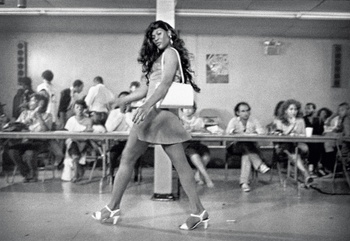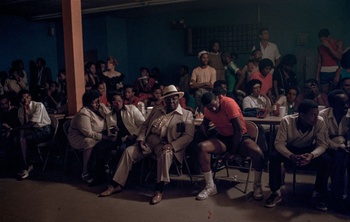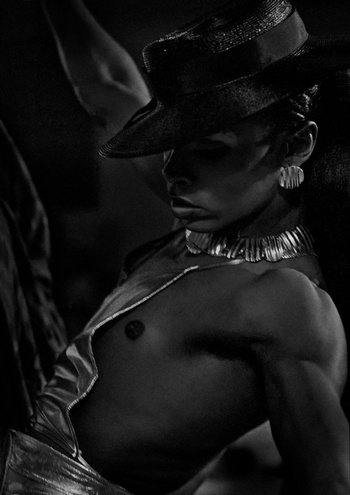In the 1960s, black and Latino drag queens and trans women from New York began to move away from mainstream, exclusionary beauty and fashion contests. The photo exhibition The Harlem Fantasy ’82 focuses on the pioneering days of the ballroom culture that empowered them.
© Nick Kuskin
| The Godfather of Baltimore,The House of LaBeija, Harlem Fantasy Ball II '82
Also read: A cowboy without a horizon: Vincen Beeckman & Kasper Demeulemeester map the American dream
In her global hit “Vogue” from 1990, Madonna championed freedom and equality between all races and genders, on the dance floor and beyond. She took inspiration from her own dancers and choreographers, who had taught her some “voguing” moves in a New York house disco. They, in t'urn, had mastered those graceful arm and hand movements at the House of Xtravaganza, one of the many “houses” in the Big Apple where people of colour in the LGBTQ community had since the early 1970s been able to express themselves without facing racial prejudice.In 1972, the Royal House of LaBeija, founded by Crystal LaBeija, was the very first, setting the stage for a global movement that took on the advocacy of queer people of colour as well as offering self-expression. In August 1982, the then newly graduated photographer

© Nick Kuskin

© Nick Kuskin
| The Godfather of Baltimore The House of LaBeija, Harlem Fantasy Ball II '82
Nick Kuskin also ended up at a ball organised by this house. “In a basement room on West 125th Street, I felt the energy of the parading and cheering each other on in person,” says the photographer, who since 2018 has made Brussels his home. “That summer, the economic recession under President Reagan was at its most palpable. Harlem was still a real ghetto, with lots of heroin and repression. At the same time, there was hope glimmering on the horizon. The multicultural nightclub scene exploded. Hip hop was born. But the creativity that was in the air back then was perhaps most fiercely expressed in ballroom culture.”

© Nick Kuskin
| Voguing 1982, Photo taken on invitation by The Royal House of Labeija
I will survive
The aim of the expo is to make younger generations acquainted with the many struggles of the subculture before it reached the mainstream. “A festive, underground event organised by themselves was the ultimate antidote to the white hetero norm. My emphasis is on the urge for survival in the community. The distinction from contemporary TV show RuPauls Drag Race or the popular Netflix series Pose, which are completely integrated into the capitalist system, is therefore great.”
Footage from the ball shows the contestants representing their respective houses before a jury table of like-minded people. At the time, Kuskin was barely familiar with the categories used by queens, trans men, and drags as they were trying to outdo each other. They parade like supermodels (“runway”), parody the gestures of straight men (“realness”) or dance with catwalk poses (“voguing”). The latter is taken from the fashion magazine Vogue, which propagated everything this community had been excluded from. “As mainstream society did not like them, they created their own family and culture, using these balls as the most exuberant means of expression. There, they did feel the dignity and humanity of being surrounded by a supportive community.”
Read more about: Expo , exhibition , Photography , fotografie



